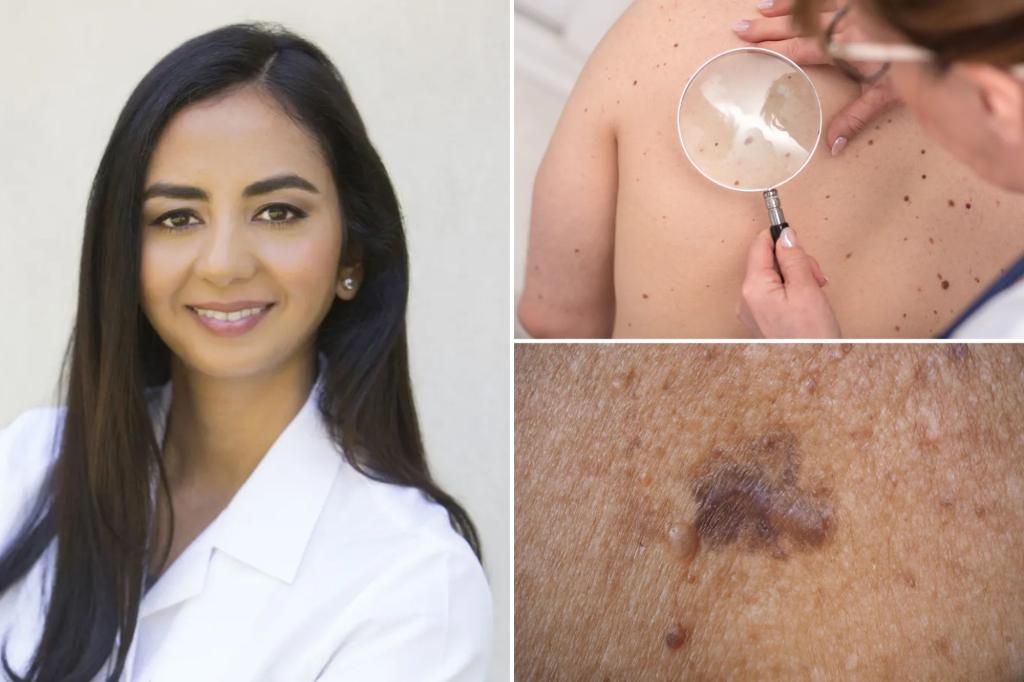Sunbathing is tan-talizing — but it comes at a price.
Skin cancer is the most common cancer in the US — and one of the most preventable. Overexposure to ultraviolet (UV) radiation from the sun or tanning beds is the main cause of skin cancer, which kills at least two Americans per hour.
As summer winds down, it’s a good idea to thoroughly inspect your body for any skin changes that may have resulted from sun exposure.
“I would suggest starting with a baseline skin self-exam done at home (and with assistance from a mirror and/or partner) to really learn the patterns of your own skin,” board-certified dermatologist Dr. Asha Patel Shah told The Post.
“That way, when something changes, you can compare it to your own known baseline.”
Patel Shah recommends paying attention to nine types of skin changes — here’s how to spot them.
What are the types of skin cancer?
There are three main types of skin cancer — basal cell carcinoma (BCC), squamous cell carcinoma (SCC) and melanoma.
BCC is the most common skin cancer.
It develops from basal cells in the deepest layer of the skin and looks like a small, pearly or flesh-colored bump or a reddish-pink scaly patch.
SCC stems from squamous cells in the upper layer of the skin.
It resembles rough, red patches or firm, pink bumps.
Melanoma is the most dangerous form of skin cancer.
Brandon Blackstock, Kelly Clarkson’s former husband, died this month at 48 after a three-year battle with melanoma.
“The Real Housewives of Beverly Hills” alumna Teddi Mellencamp, 44, was diagnosed with it in 2022.
Tell-tale signs include a dark, unevenly colored spot or a pink, red or skin-toned lump.
“Skin cancer can truly mimic benign skin lesions, conditions or symptoms,” said Patel Shah, head of medical affairs North America, skin health & beauty at the consumer health company Kenvue.
How to do a self-exam
When examining your body for signs of skin cancer, it’s essential not to overlook any areas.
Don’t forget to check your scalp, genital area, palms, between your fingers, under your fingernails and underneath your breasts.
Take a photo to share with your doctor.
It’s helpful to keep the acronym “ABCDE” in mind as you scan your body.
- Asymmetry: One half of the lesion or mole looks different than the other.
- Border: The edges are irregular, notched or poorly defined.
- Color: The color may differ from your other moles, or there may be several colors within one spot.
- Diameter: The width is larger than 1/4 inch, or about the size of a pencil eraser.
- Evolving: The size, shape or color changes over time.
“I suggest a skin self-exam monthly, especially for those who are at a higher risk of skin cancer (i.e., previous history of skin cancer, family history of skin cancer, [history of atypical moles], immunosuppressed patients,” Patel Shah said.
“Generally, patients with a higher risk should see a board-certified dermatologist at least once a year.”
Note these abnormalities
Patel Shah wants you to keep an eye on these skin changes.
- A growth, sore or lesion that does not heal, keeps reopening after healing or bleeds/scabs and never heals
- A rough, dry patch resistant to moisturizers, especially if it is in a sun-exposed area of the body like the face, forearms or chest
- A rapidly growing new lump, bump or growth that may be painful or sore
- Persistent wart-like growths that may be painful or sore
- Pigmented lesions that have signs of asymmetry, irregular borders or color changes
- Pigmented lesions on “special sites” like the palms or soles
- Dark, uneven or wide streaks in the fingernail plates
- Anything on the skin that is constantly itchy, sore, tender, painful and/or bleeding
- Cases of widespread, treatment-resistant skin conditions resembling eczema that could indicate a skin cancer that is not related to UV exposure, though this is rare
Read the full article here

